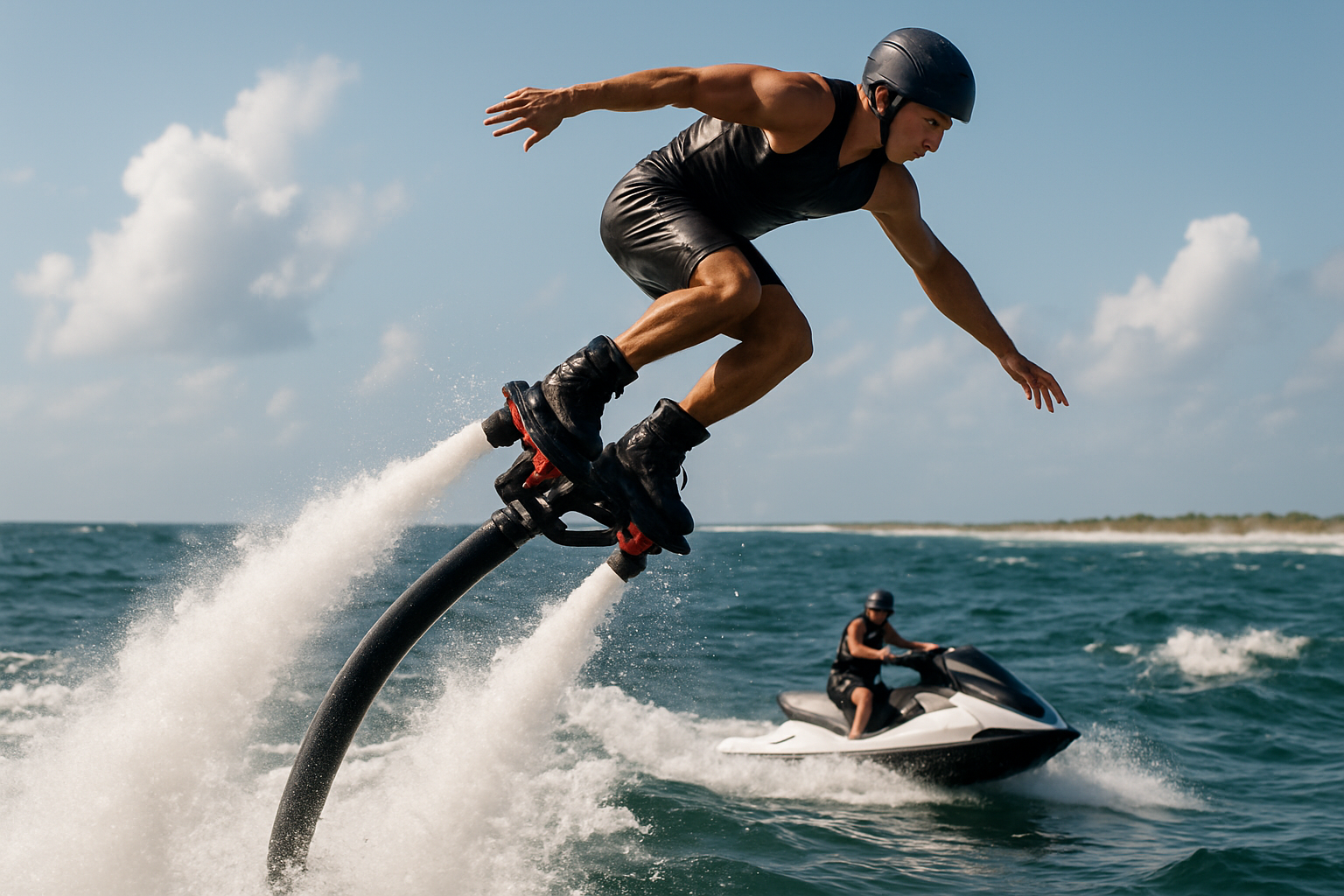Flyboarding: Soaring Above the Waves on a Liquid Jetpack
Imagine propelling yourself high above the ocean's surface, defying gravity with nothing but water jets beneath your feet. This isn't a scene from a sci-fi movie; it's the thrilling reality of flyboarding. As adventure seekers constantly hunt for the next adrenaline rush, this water sport has emerged as a captivating blend of surfing, wakeboarding, and jet-skiing, offering an unparalleled experience that pushes the boundaries of aquatic recreation.

How Flyboarding Works
At its core, flyboarding relies on a simple yet ingenious mechanism. A long hose connects the flyboard to a personal watercraft, typically a jet ski. The watercraft’s engine pumps water through the hose, which is then expelled through nozzles on the bottom of the board. This creates a powerful upward thrust, allowing riders to hover, dive, and perform aerial maneuvers up to 15 meters above the water’s surface.
Mastering the Art of Flight
While the technology behind flyboarding is straightforward, mastering the sport requires a blend of balance, core strength, and finesse. Beginners often start with basic hovering and simple movements, gradually progressing to more advanced techniques like backflips, corkscrews, and dolphin dives. Most newcomers can achieve stable flight within 5-10 minutes, but perfecting complex maneuvers demands dedication and practice.
The Global Flyboarding Phenomenon
Since its inception, flyboarding has spread rapidly across the globe. From the azure waters of the Mediterranean to the tropical paradises of Southeast Asia, enthusiasts can now find flyboarding experiences in nearly every major beach destination. The sport has even spawned competitive events, with the Flyboard World Championship attracting top athletes who push the limits of what’s possible on these water-powered platforms.
Safety and Environmental Considerations
As with any extreme sport, safety is paramount in flyboarding. Reputable operators provide comprehensive safety briefings, protective gear, and expert instruction to ensure a secure experience. Environmental concerns have also been addressed, with advancements in technology reducing noise pollution and minimizing impact on marine ecosystems.
Flyboarding Fast Facts
• Invented in 2011 by Franky Zapata
• Can lift riders up to 15 meters above water
• Uses water propulsion from a jet ski
• Beginners can learn basic hovering in 5-10 minutes
• Annual Flyboard World Championship held since 2012
• Available in over 50 countries worldwide
• Typical session lasts 15-30 minutes
• No prior water sports experience necessary
The Future of Aerial Aquatics
As flyboarding continues to evolve, innovators are already exploring new frontiers in water-powered flight. From longer-range devices to more eco-friendly propulsion systems, the future promises even more exciting developments in this unique intersection of water sports and aviation. Whether you’re an adrenaline junkie or simply looking for a novel vacation experience, flyboarding offers a thrilling glimpse into the future of recreational water activities.




